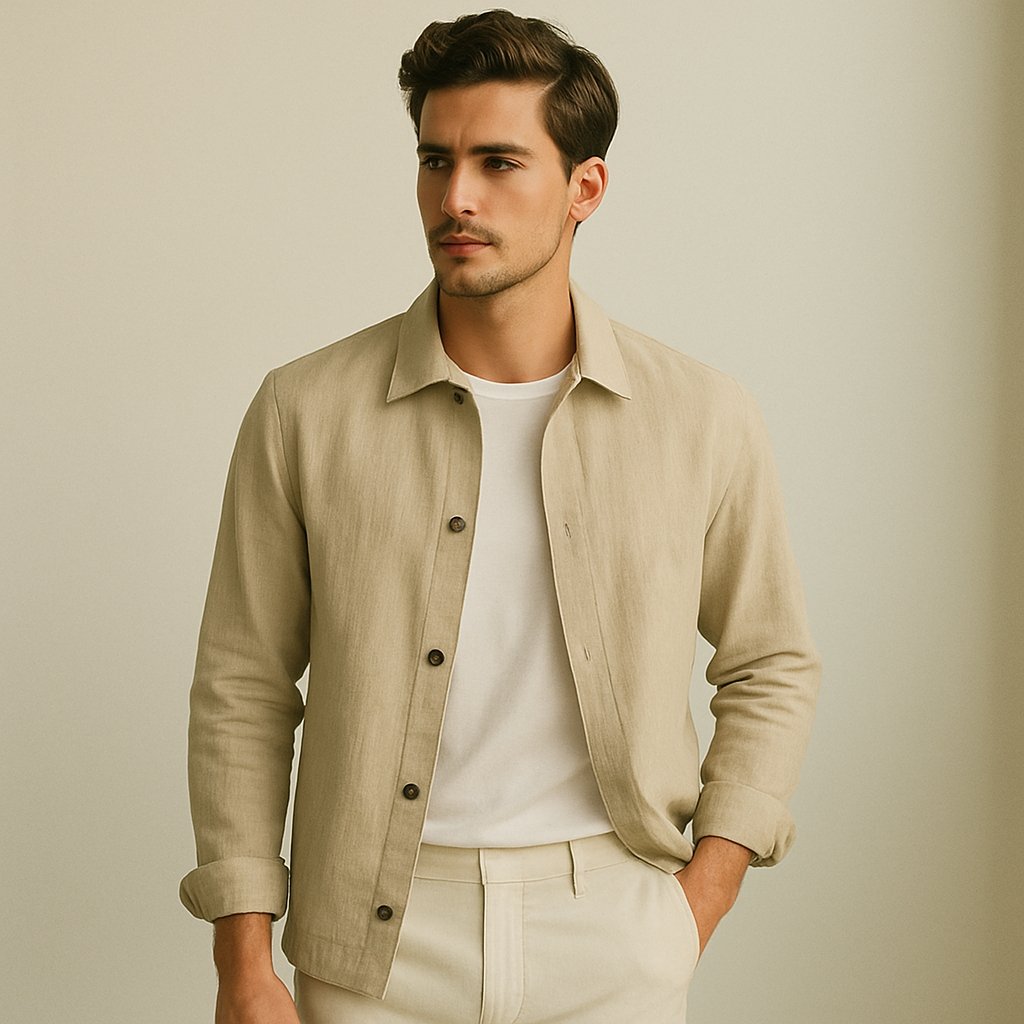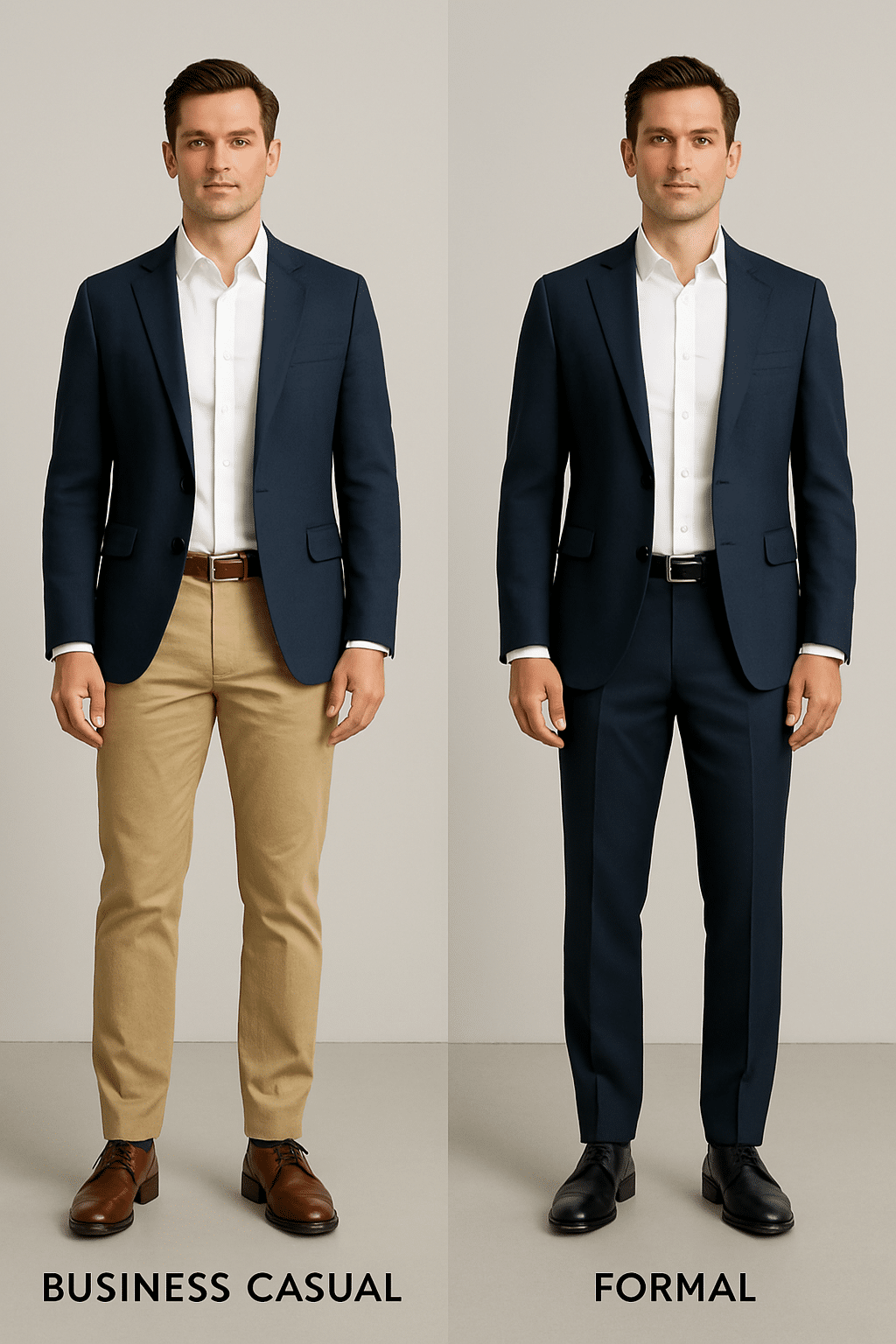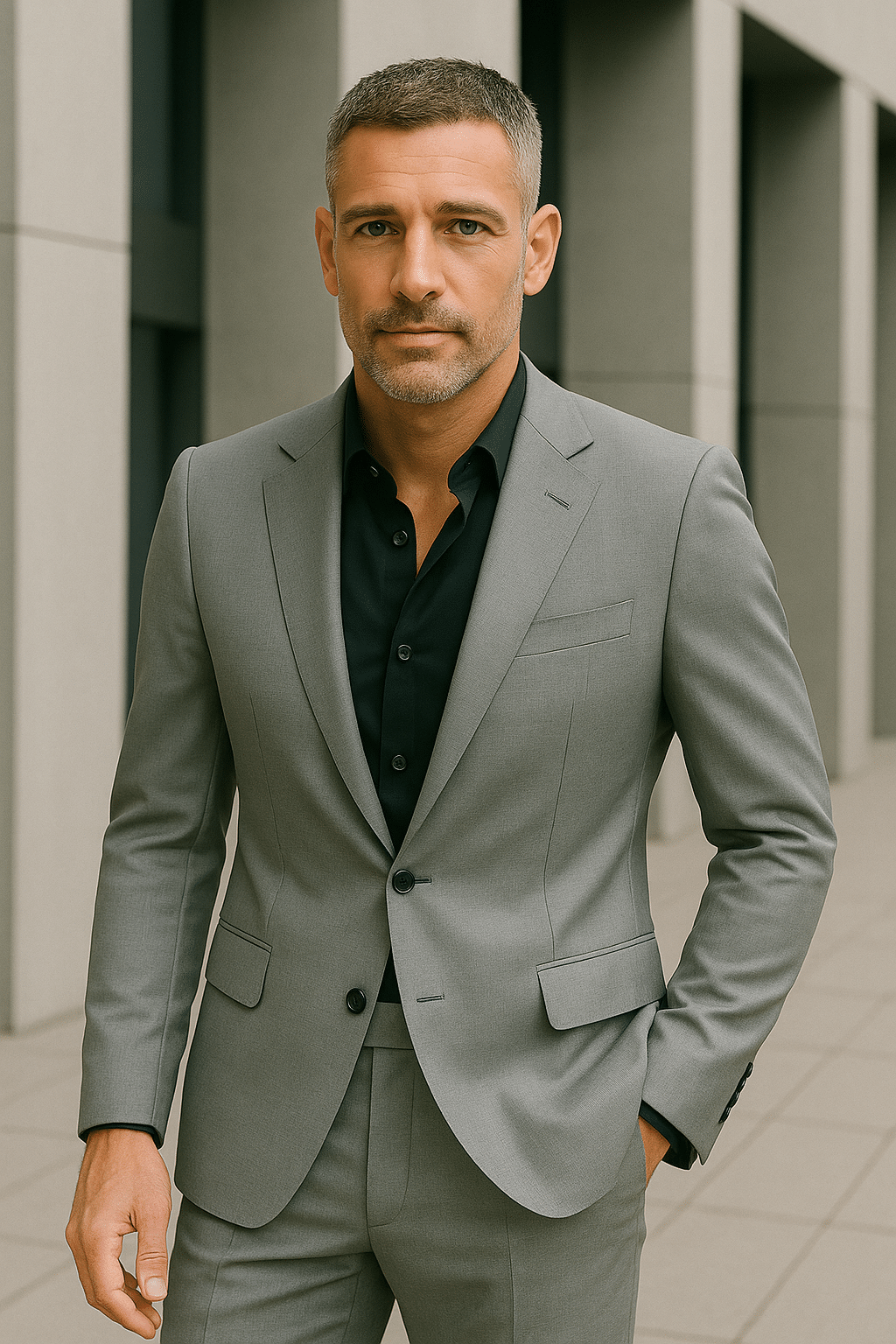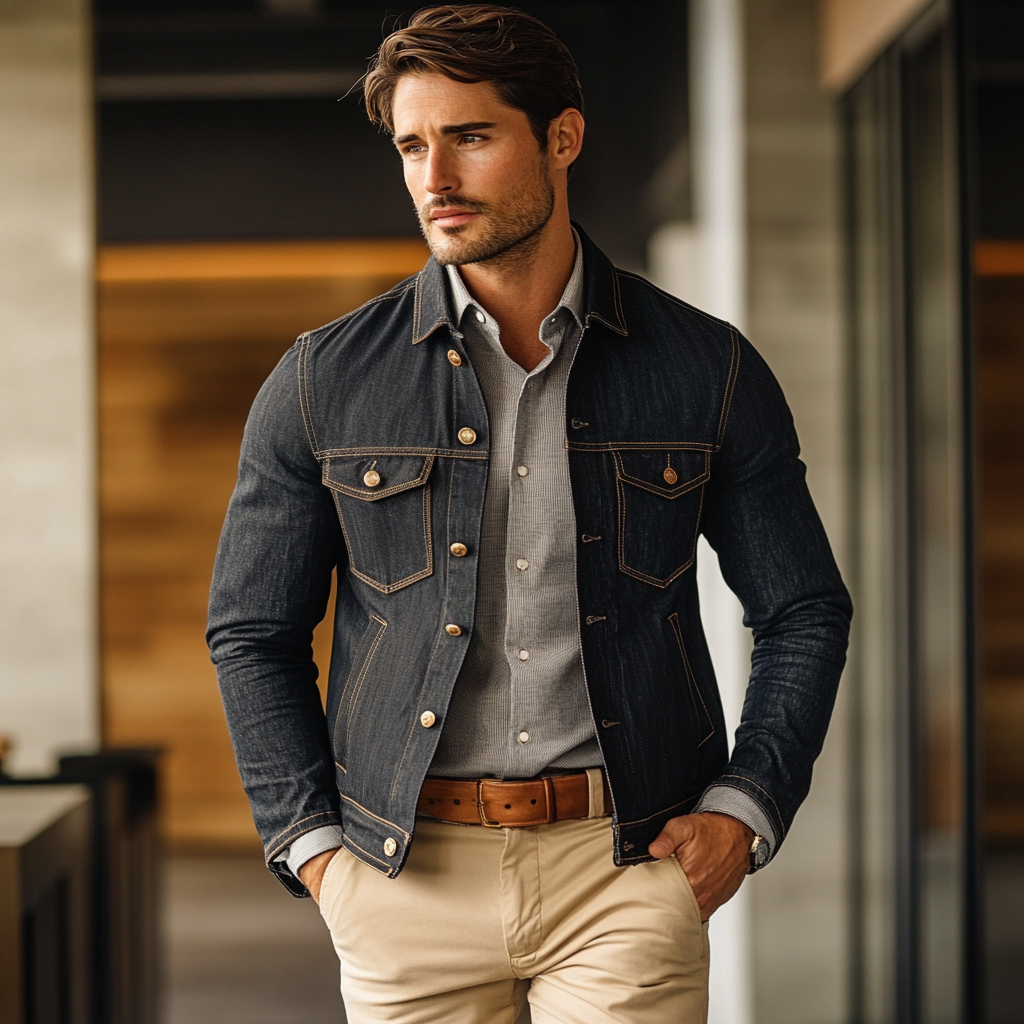Business Casual Men’s Essentials: Wardrobe Must-Have List
The modern professional man walks a fine line between formal business attire and casual comfort. Business casual has emerged as the dominant dress code across industries, offering both versatility and the opportunity for personal expression. But what exactly constitutes “business casual,” and how can you build a wardrobe that meets these standards while reflecting your personal style? From boardroom-ready blazers to versatile footwear options, this guide to business casual men essentials will help you navigate different workplace environments with confidence.
Your hairstyle plays an equally important role in your professional image. A well-maintained cut that complements your face shape and personal style can elevate your entire appearance, projecting confidence and attention to detail.
What is Business Casual for Men?
Business casual is a dress code that bridges the gap between formal business attire and casual everyday clothing. It emerged in the 1990s as workplaces began relaxing traditional suit-and-tie requirements while still maintaining professional standards. Today, business casual represents a versatile approach to workplace dressing that allows for personal expression while preserving professionalism.
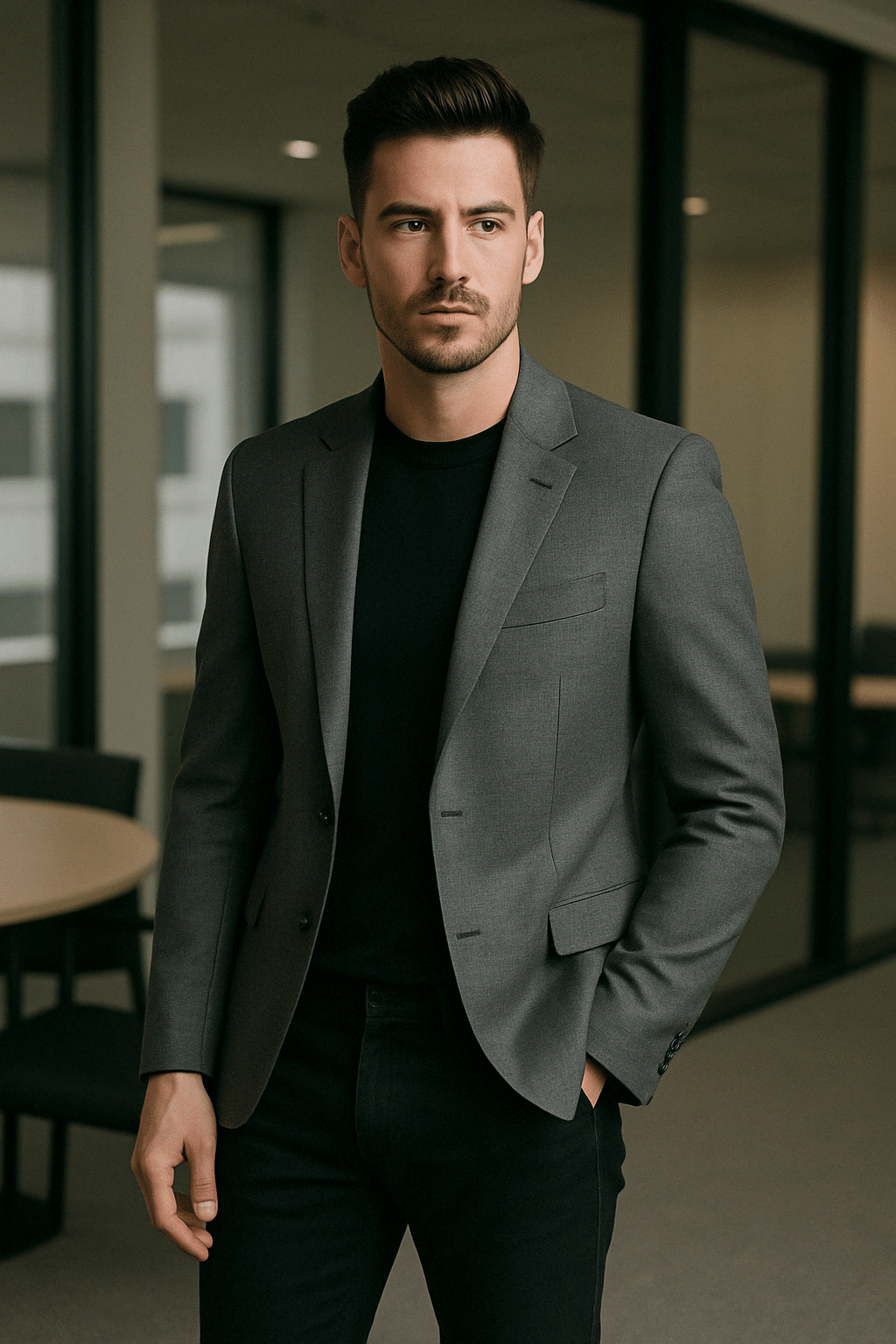
At its core, business casual offers flexibility without sacrificing polish—permitting comfort while requiring intentionality. Unlike formal business wear with its rigid rules, business casual exists on a spectrum that varies by industry, company culture, geographic location, and specific situations.
For men, business casual typically means:
- Trading full suits for separates (blazers with non-matching trousers)
- Allowing for shirt options beyond formal dress shirts
- Incorporating smart casual footwear alongside traditional dress shoes
- Providing space for thoughtful personal expression through color, texture, and accessories
The key to mastering business casual lies in understanding your specific workplace context and creating outfits that are appropriate, comfortable, and reflective of your professional identity.
Business Casual Attire for Men: Essential Wardrobe Foundation
Building an effective business casual wardrobe starts with versatile foundation pieces that work across multiple settings. These core items create the framework for countless professional outfits while minimizing unnecessary spending.
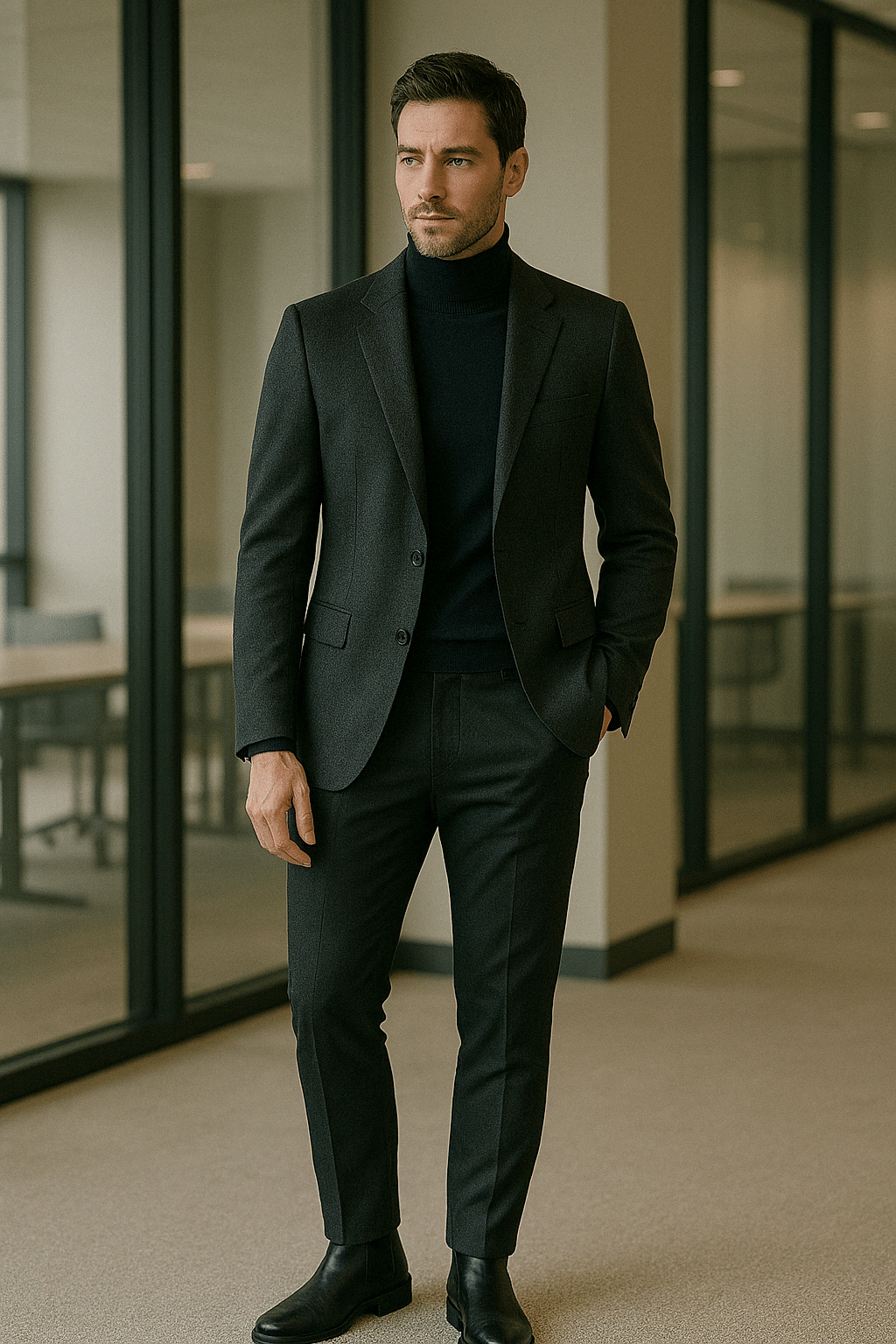
Tops
Blazers & Sport Coats (2-3)
- Navy single-breasted blazer (year-round weight)
- Grey or charcoal sport coat (structured but not rigid)
- Seasonal texture option (tweed for fall/winter or linen blend for spring/summer)
Dress Shirts (5-7)
- White Oxford cloth button-down
- Light blue spread collar dress shirt
- White poplin dress shirt
- Subtle patterned options (fine stripes, small checks, or micro patterns)
- One seasonal texture option (flannel for winter, linen blend for summer)
Casual Button-Downs (3-4)
- Oxford cloth button-downs in versatile colors (blue, white)
- Chambray or denim shirt
- Subtle plaid or check option
- Seasonal fabric option (flannel for winter, lightweight cotton for summer)
Knits & Sweaters (3-4)
- Fine merino wool V-neck or crew neck in navy or charcoal
- Quarter-zip pullover in neutral color
- Cardigan in grey or navy
- Lightweight cotton sweater for seasonal transition
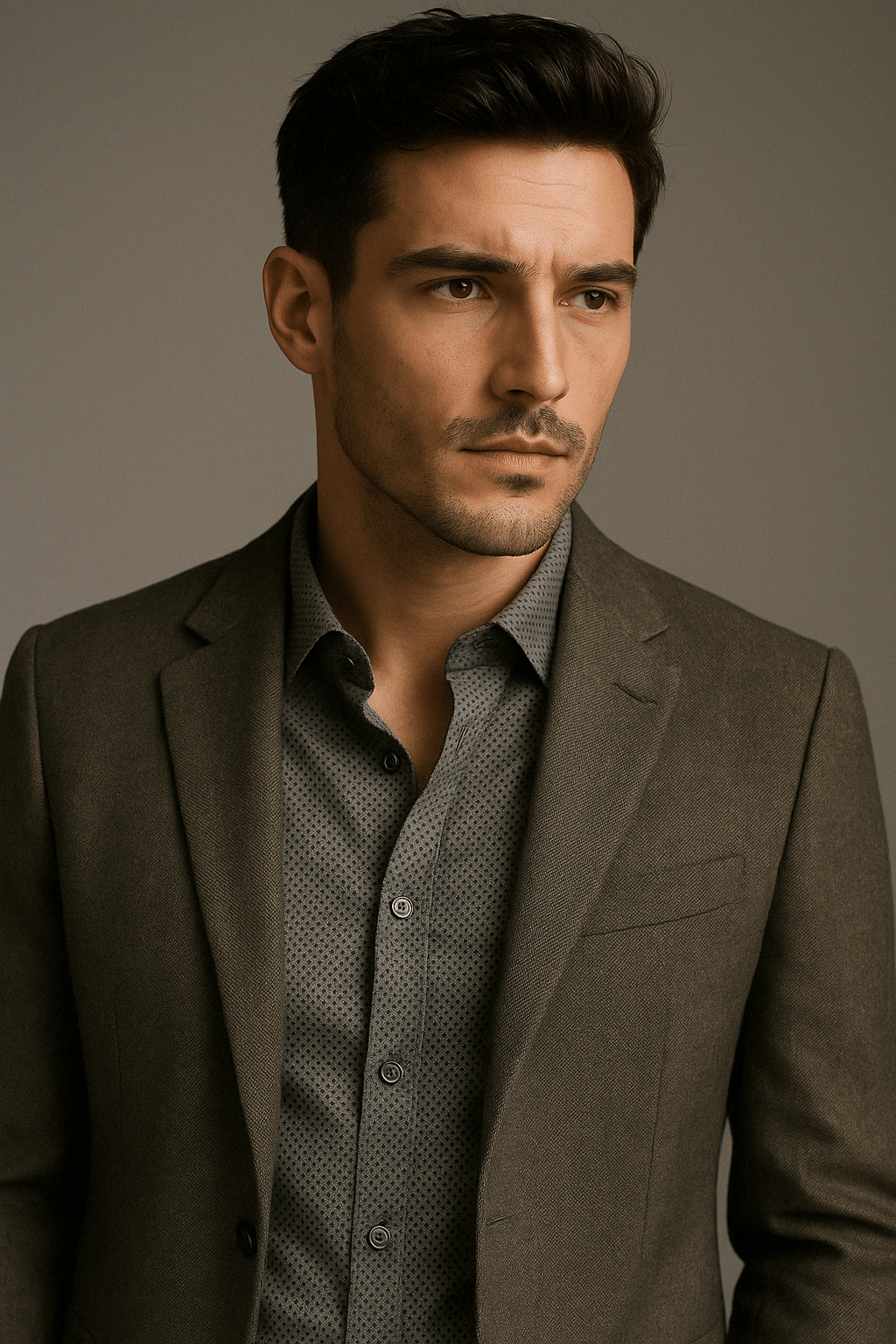
Polos (2-3)
- Refined knit polo in navy
- Piqué cotton polo in neutral color
- Seasonal color option (burgundy, olive, etc.)
Bottoms
Dress Trousers (3-4)
- Navy wool or wool-blend trousers
- Medium grey wool trousers
- Charcoal wool trousers
- Optional seasonal pair (flannel for winter, tropical wool for summer)
Chinos (2-3)
- Khaki chinos
- Navy chinos
- Olive or grey chinos
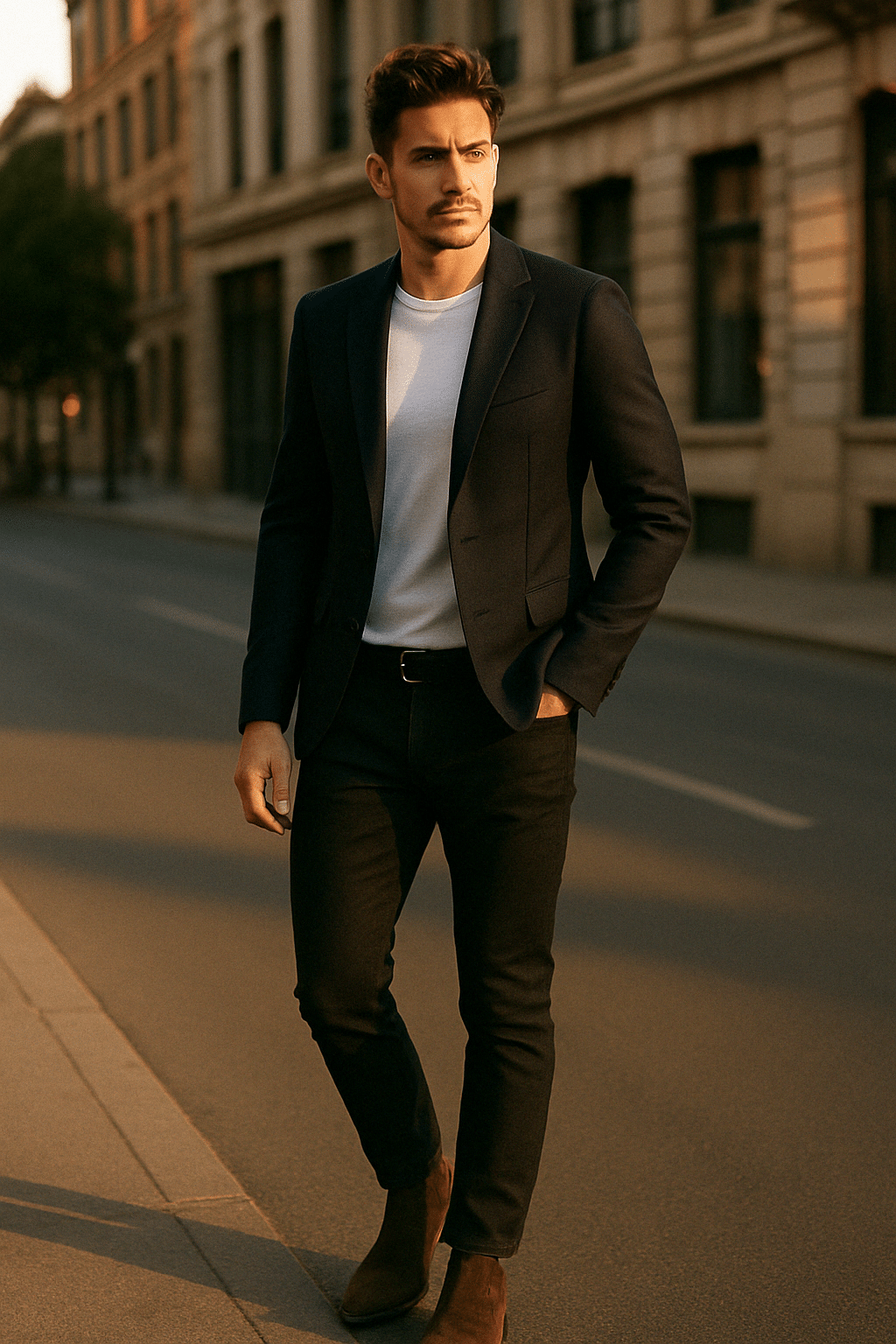
Denim (1-2)
- Dark indigo jeans (no distressing or prominent fading)
- Black or dark grey jeans
Outerwear
Structured Options (1-2)
- Single-breasted overcoat in navy or charcoal
- Trench coat in khaki or navy
Casual Options (1-2)
- Field jacket or barn coat
- Quilted jacket or vest
- Technical/performance jacket for inclement weather
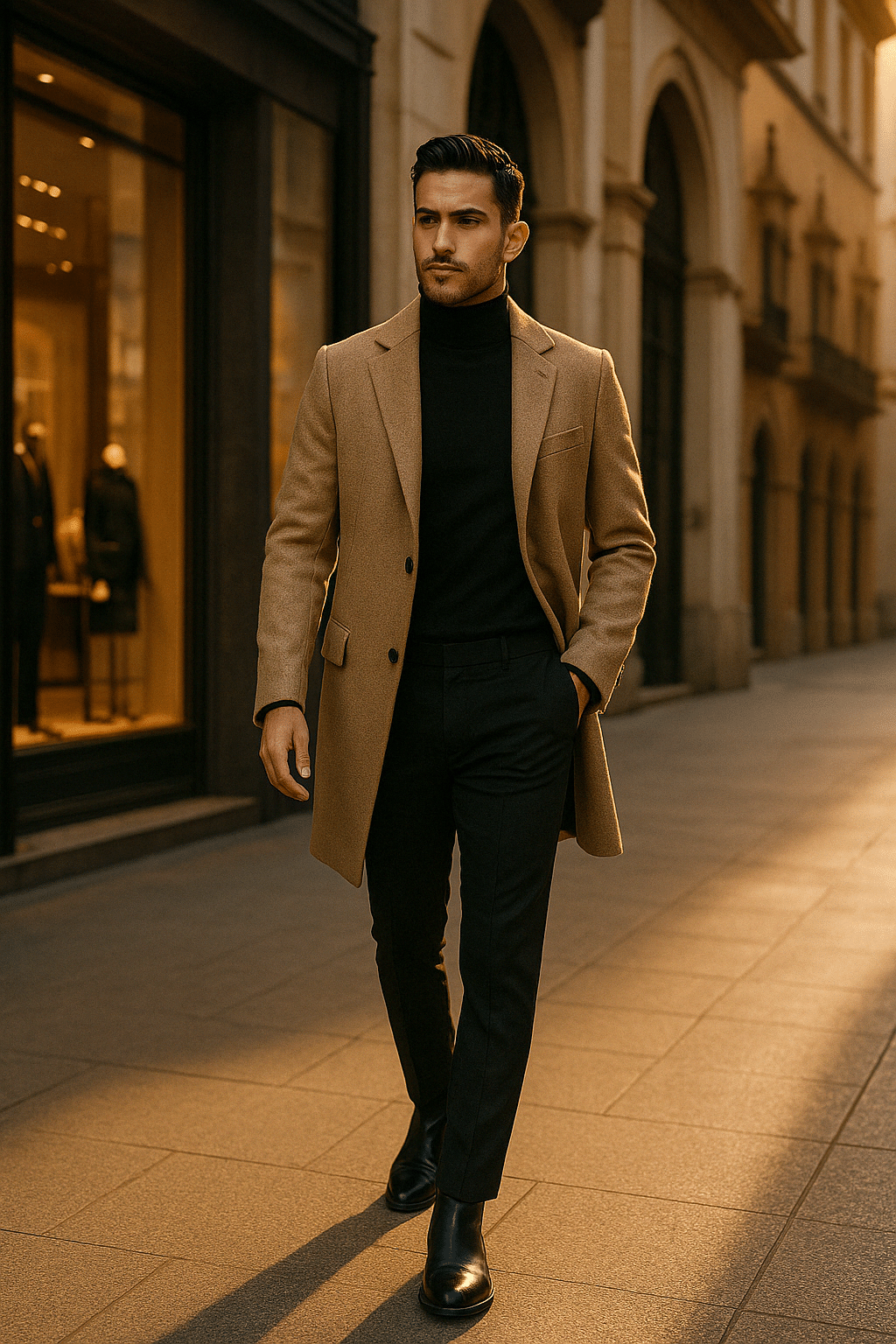
Business Casual Shoes for Men
Footwear anchors your business casual look and deserves significant investment. Quality shoes not only last longer but elevate your entire appearance. Here are essential business casual shoe categories:
Formal End of Business Casual Attire
Oxford Shoes
- Most formal business casual option
- Best in dark brown or black
- Smooth leather preferred
- Cap-toe or plain toe designs work well
- Ideal for client meetings and presentations
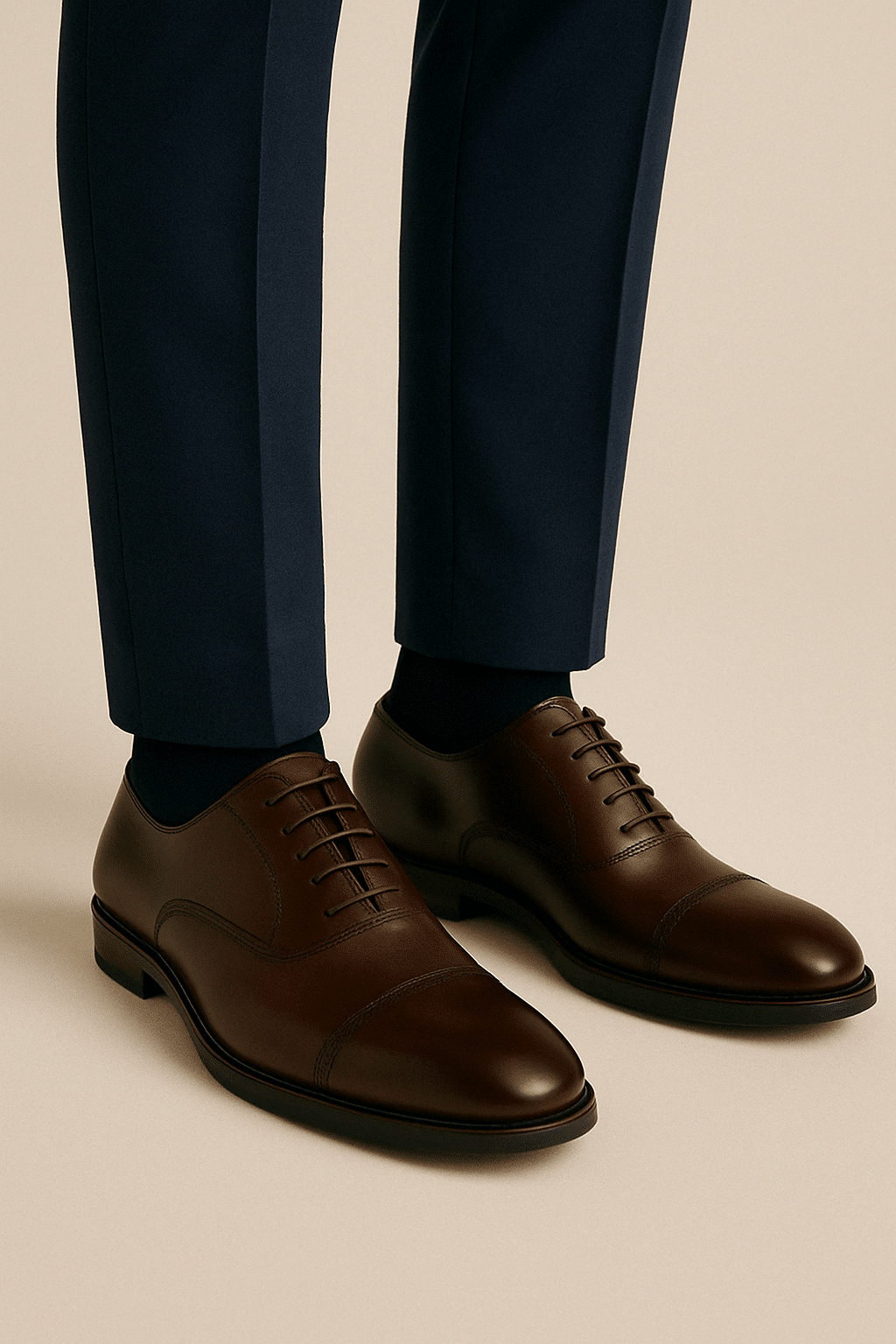
Derby Shoes
- Slightly less formal than Oxfords
- Open lacing system provides more comfort
- Versatile with both trousers and premium denim
- Dark brown is most versatile color
- Perfect for everyday office wear
Monk Strap Shoes
- Distinguished by buckle closure instead of laces
- Single or double monk strap options
- Adds visual interest to simple outfits
- Brown leather is most versatile
- Excellent for networking events or client dinners
Middle Range of Business Casual
Loafers
- Slip-on convenience with polished appearance
- Penny loafers for traditional offices
- Bit loafers (with metal hardware) for style-forward environments
- Suede options for warmer months
- Leather options for year-round wear
- Versatile with trousers, chinos, and dark denim
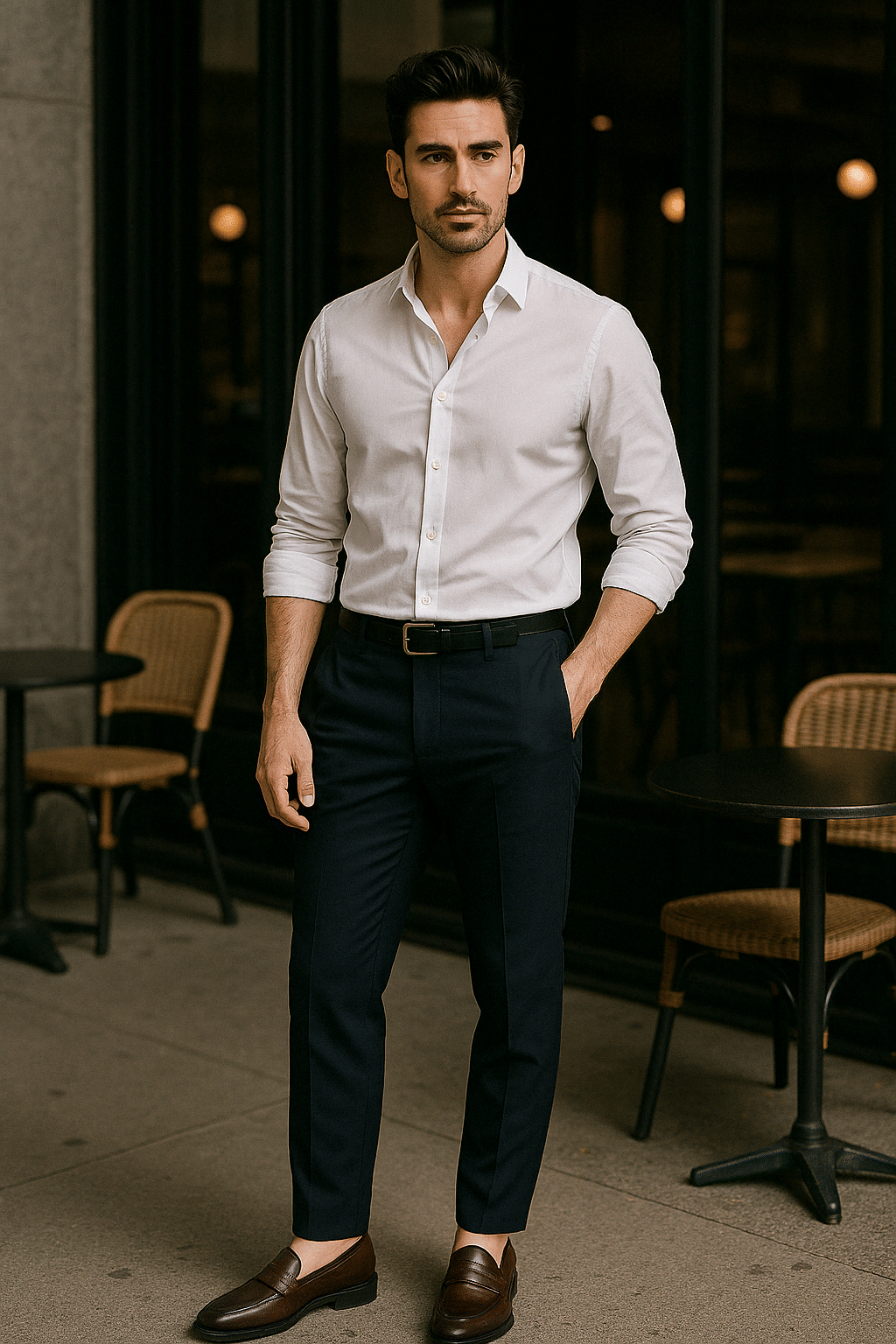
Chelsea Boots
- Sleek silhouette with elastic side panels
- Leather for more formal settings
- Suede for creative environments
- Works well in fall/winter or year-round in temperate climates
- Pairs excellently with slim trousers or quality denim
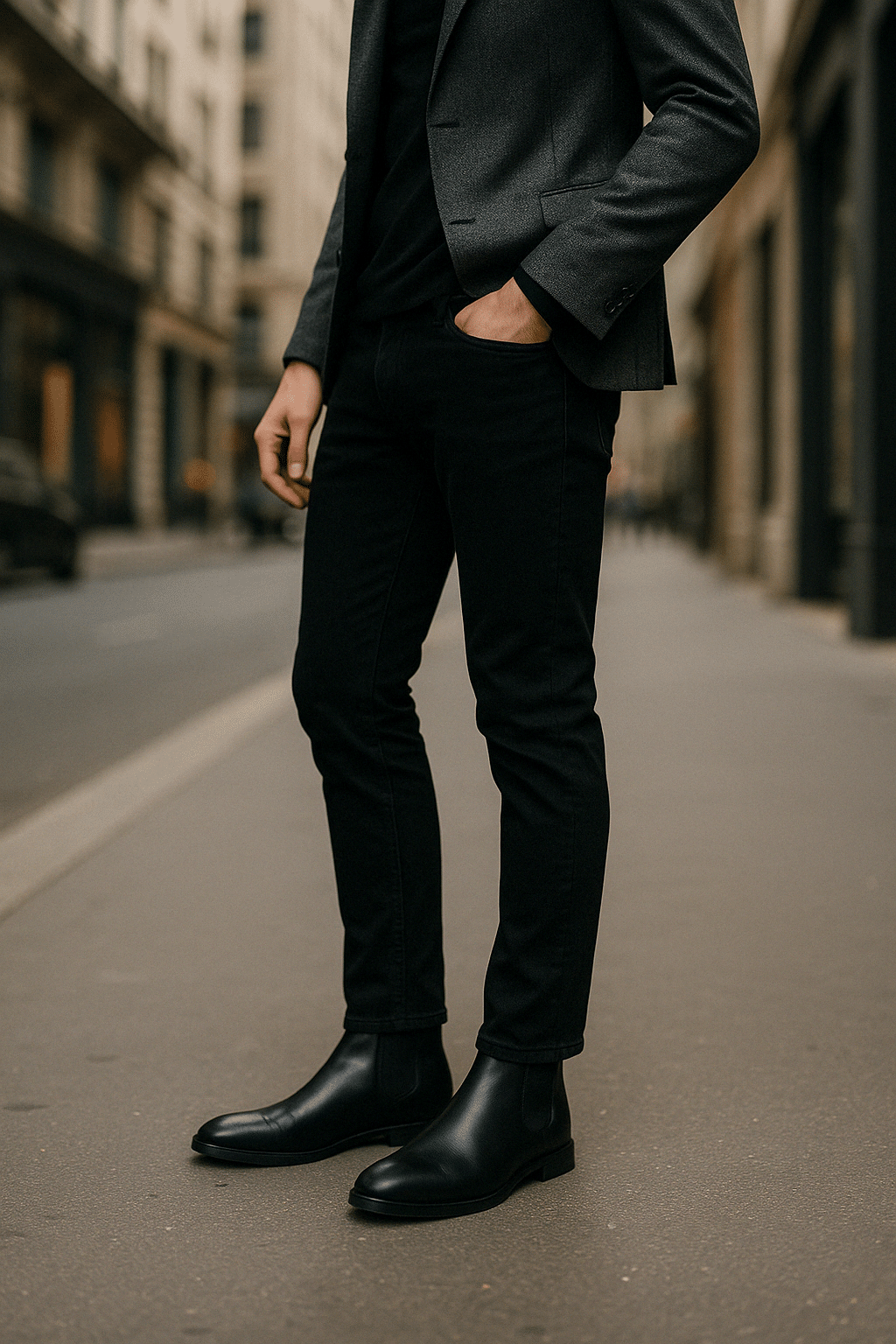
Chukka Boots
- Ankle-height with open lacing
- Suede versions for casual offices
- Leather options for more formal environments
- Desert boot styles for creative workplaces
- Ideal for fall and winter business casual
Casual End of Business Casual Attire
Dress Sneakers
- Minimal design with clean lines
- Premium materials (leather, suede)
- Monochromatic colorways (white, navy, grey, black)
- No prominent logos or athletic styling
- Suitable for creative industries and casual Fridays
- Best paired with chinos or dark denim
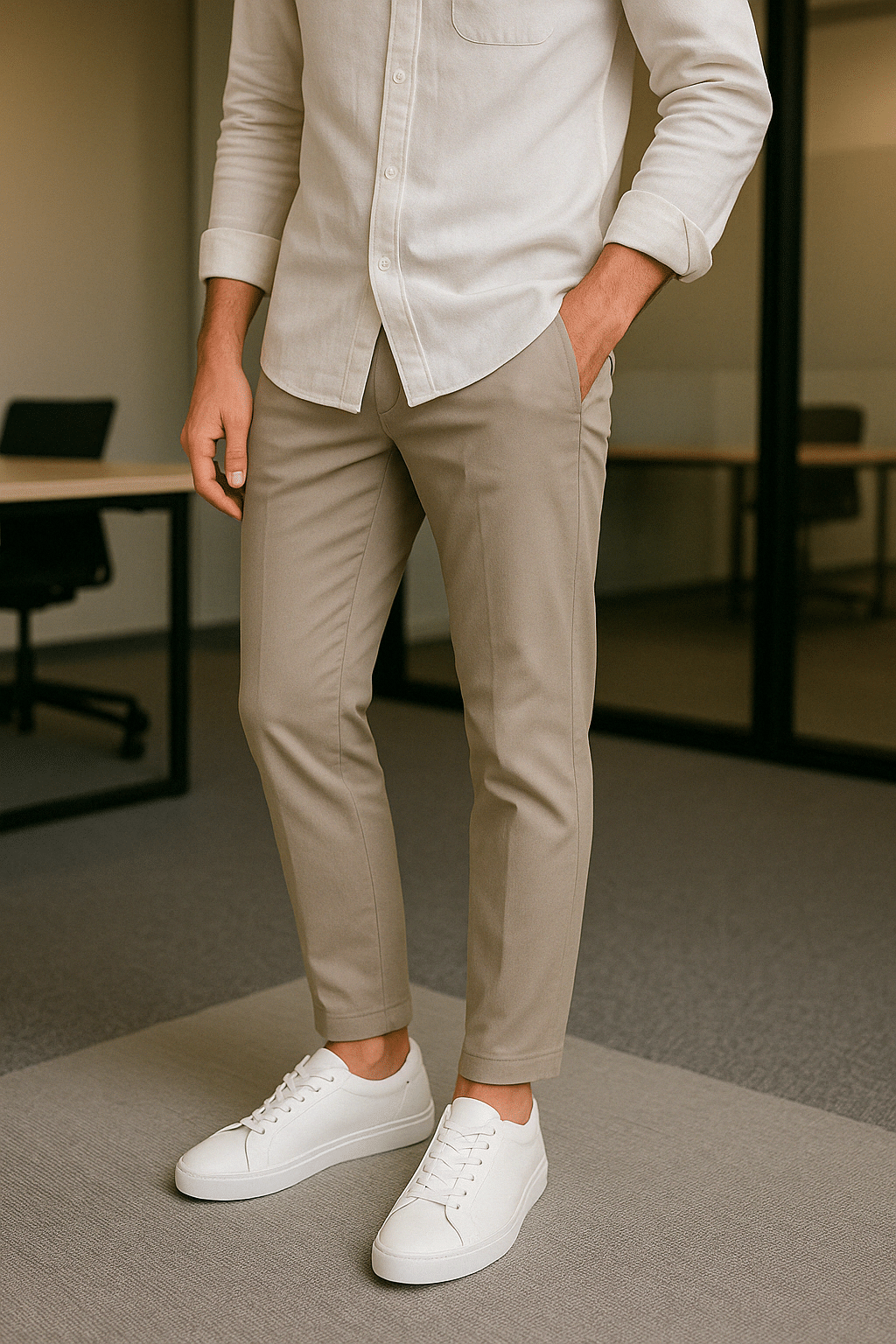
Driving Shoes/Moccasins
- Refined casual option for warmer months
- Soft construction with rubber-studded sole
- Suede or fine leather construction
- Best in warm-weather business casual settings
- Perfect for summer Fridays or creative offices
Boat Shoes/Deck Shoes
- Acceptable in casual business environments
- Best in premium leather with minimal contrast stitching
- Traditional brown or navy most versatile
- Strictly warm-weather options
- Appropriate for casual Fridays or summer gatherings
Color Theory for Business Casual for Men
Understanding color helps create cohesive, appropriate business casual outfits across different professional contexts.

Foundation Colors
These form the backbone of a business casual wardrobe:
- Navy: Most versatile foundation color, works across all industries
- Grey: From charcoal to light grey, excellent year-round
- Brown/Tan/Khaki: Essential neutrals for trousers and accessories
- White/Off-White: Foundational for shirts and summer pieces
- Black: Best for evening or creative environments (use sparingly in traditional settings)
Accent Colors
These add personality within professional boundaries:
- Burgundy: Sophisticated alternative to red, works year-round
- Dark Green: Excellent alternative to navy, especially in fall/winter
- Light Blue: More approachable than white for shirts
- Purple: In small doses adds distinction in traditional settings
- Olive: Versatile earth tone for trousers and outerwear
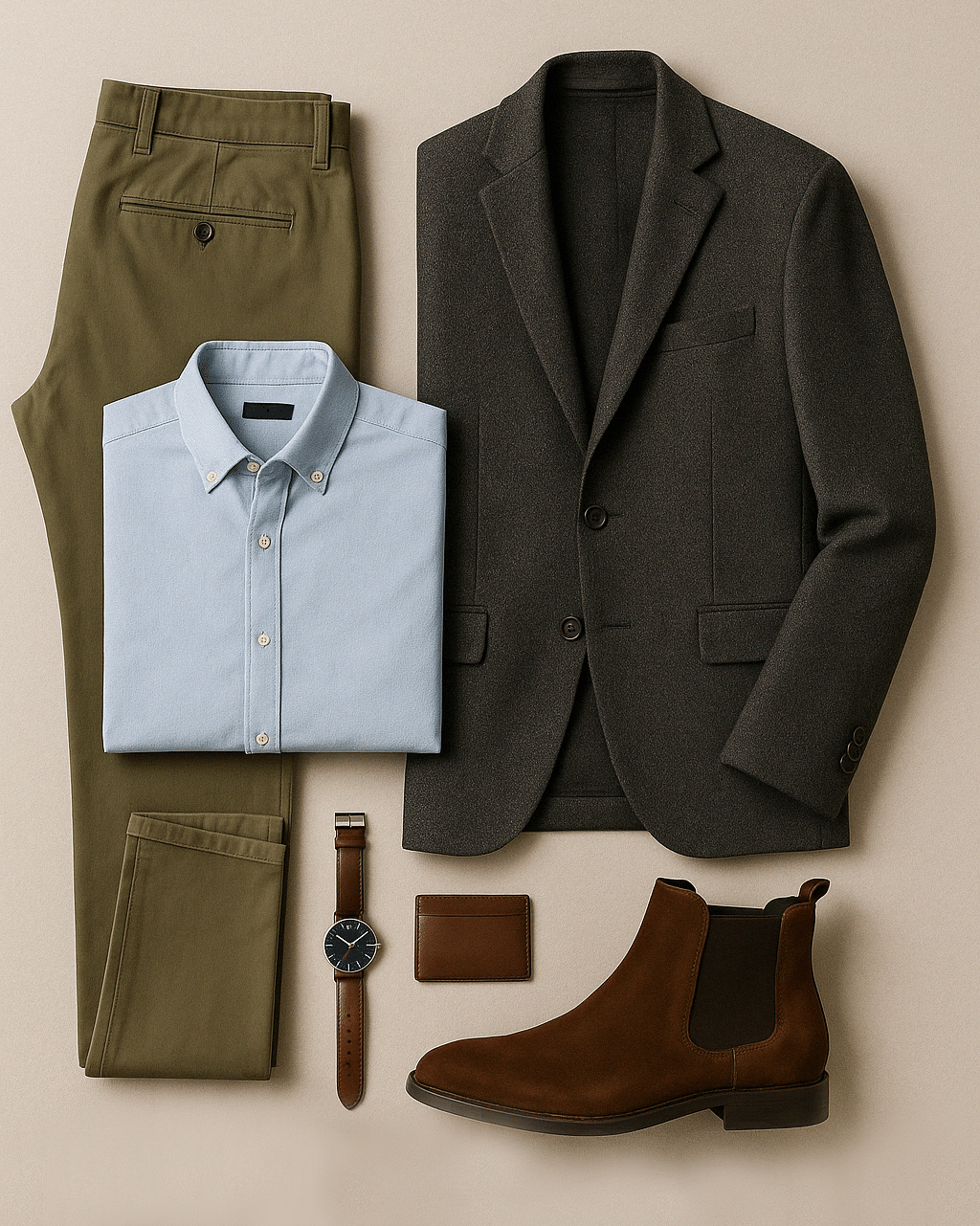
Color By Industry
Traditional Corporate
- Navy, grey, white, subtle blues dominate
- Higher contrast combinations (white shirt with navy blazer)
- Limited pattern mixing
- Subtle accent colors in accessories only
Creative Fields
- Expanded palette including olives, burgundies, and richer colors
- Monochromatic looks acceptable
- Texture and fabric variation prioritized
- Room for bolder accent colors
Tech Industry
- Strategic casual elements in traditional silhouettes
- Performance fabrics in traditional colors
- Navy, grey, black foundations with subtle personal touches
- Clean, minimal aesthetic with technical details
Accessories That Elevate
The right accessories refine your business casual look while expressing personal style within professional boundaries.
Essential Accessories
Belts (2-3)
- Dark brown leather dress belt
- Black leather dress belt
- Casual woven or textured option
Watches
- Versatile metal bracelet or leather strap option
- Case diameter proportional to wrist size
- Minimal complications for business settings
- Consider industry norms (traditional watch for finance, smart watch for tech)

Bags
- Leather briefcase or document holder (client-facing roles)
- Messenger bag or minimal tote (hybrid needs)
- Premium backpack with laptop protection (tech-focused roles)
Eyewear
- Well-fitted frames that complement face shape
- Classic shapes for traditional industries
- Statement frames acceptable in creative fields
- Consider lens treatments for digital screen work
Additional Accessories
- Quality sunglasses in classic shape
- Simple pocket squares for blazers
- Minimal leather wallet
- Weather-appropriate options (umbrellas, scarves, gloves)
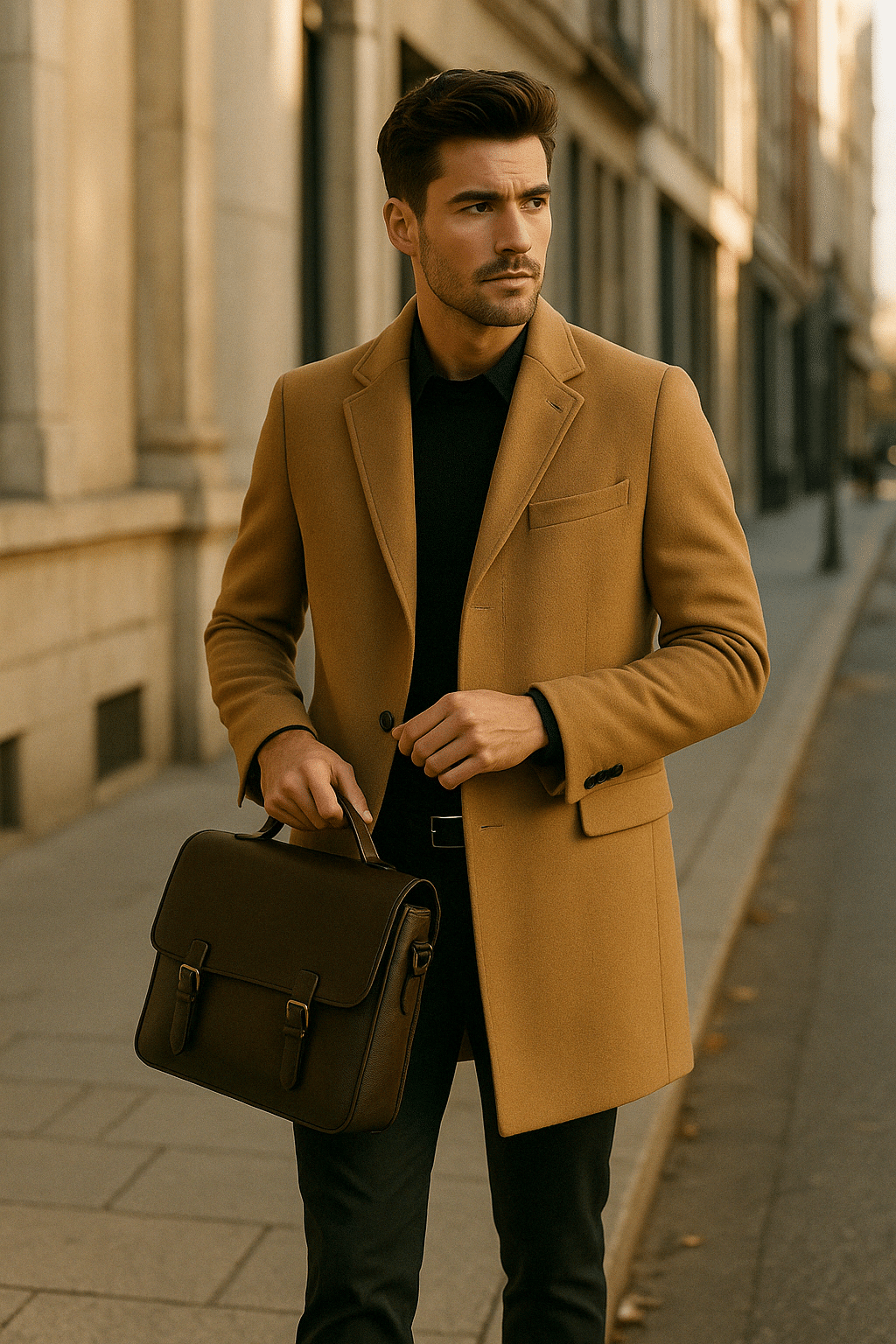
Business Casual Etiquette by Setting
Understanding context-specific expectations helps you adapt your business casual approach appropriately.
Office Environments
- Observe leadership’s standard of dress
- Maintain consistent formality throughout the week
- Keep shirts tucked in even if blazers are removed
- Consider office temperature when layering
Client Meetings
- Research client dress code beforehand
- Dress slightly more formal than the client’s expected attire
- Wear blazer or structured outerwear when arriving and departing
- Consider regional business customs for traveling meetings
After-Hours Business Events
- Business dinners: Maintain office level of formality
- Networking events: Add subtle conversation piece (watch, pocket square)
- Industry conferences: Adjust to event-specific expectations
- Team celebrations: Slight relaxation while maintaining professionalism
Remote Work & Video Calls
- Full outfit adherence for important presentations
- Professional from waist up at minimum
- Solid colors photograph better than busy patterns
- Consider lighting and how colors appear on camera
Building Your Business Casual Wardrobe
Approach your business casual wardrobe as an investment system rather than a collection of individual items.
Investment Hierarchy
- Footwear: Highest return on investment, hardest-working items
- Outerwear & Blazers: Define your silhouette and first impression
- Trousers & Denim: Foundation for comfort and appropriate formality
- Shirts: Balance quality with quantity as these rotate frequently
- Accessories: Small investments with significant impact
Quality Indicators
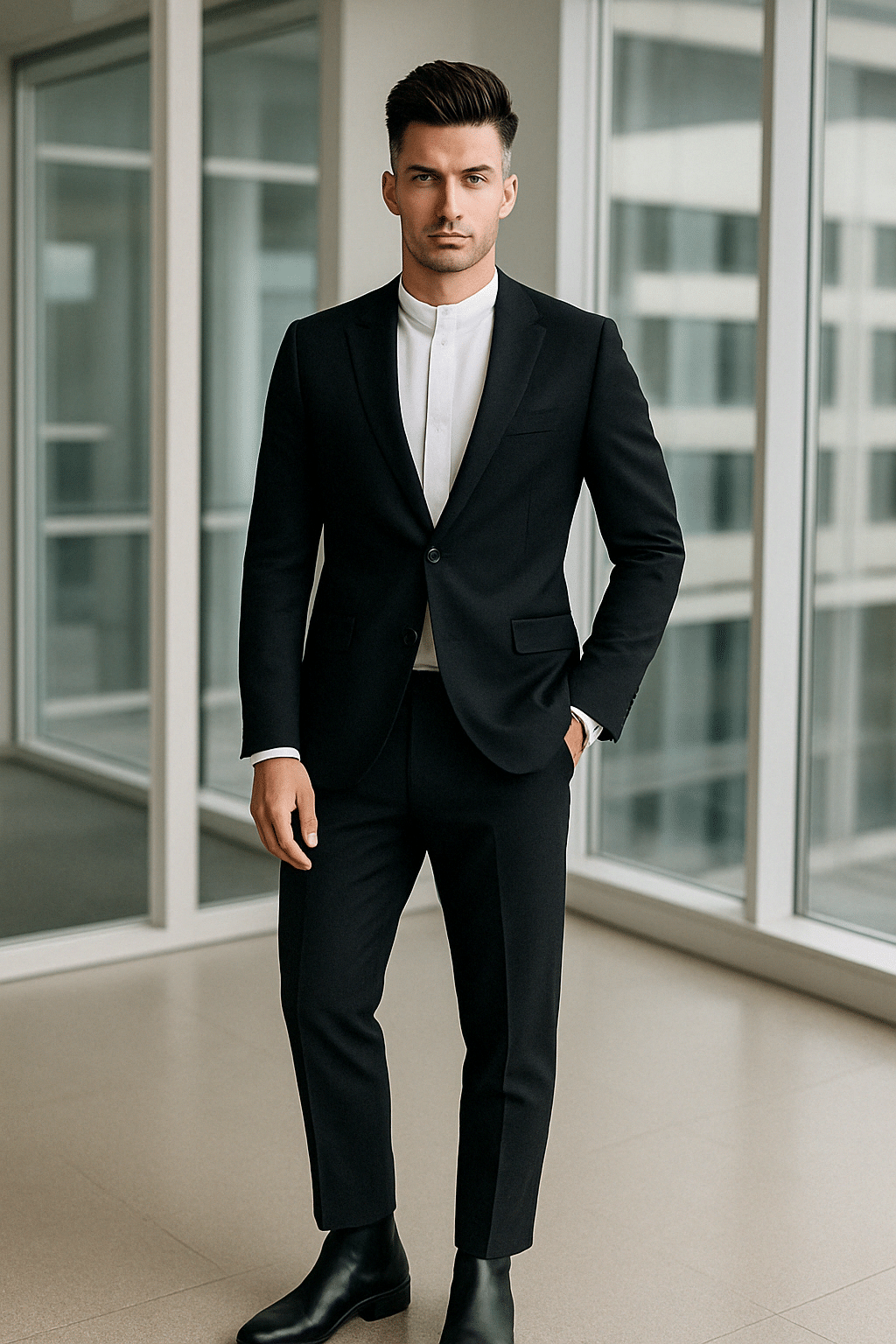
Fabrics
- Natural fibers (wool, cotton, linen) for core pieces
- Strategic performance blends for comfort and durability
- Appropriate weight for intended season
- Tight, even weaves without irregularities
Construction
- Reinforced stress points
- Quality stitching (tight, even, no loose threads)
- Pattern matching at seams
- Substantial buttons and hardware
Fit
- Accommodates your body type without excessive tailoring needs
- Consistent sizing across pieces
- Room for comfortable movement
- Flattering proportions
The Complete Professional Appearance
Business casual extends beyond clothing to your overall presentation.
Grooming Essentials
- Regular haircut maintenance (every 3-5 weeks)
- Facial hair kept intentional and well-groomed
- Nails clean, trimmed, and maintained
- Subtle or no fragrance in professional settings
Body Language Complements
- Stand tall with shoulders back
- Maintain appropriate eye contact during conversations
- Consider jacket buttoning protocols (stand buttoned, sit unbuttoned)
- Project confidence through posture in all outfits
Business casual isn’t simply about following a dress code—it’s about creating a professional identity that works as hard as you do. By understanding these essentials, you’ll navigate any professional environment with confidence and style, making positive impressions while maintaining your personal comfort and expression.


